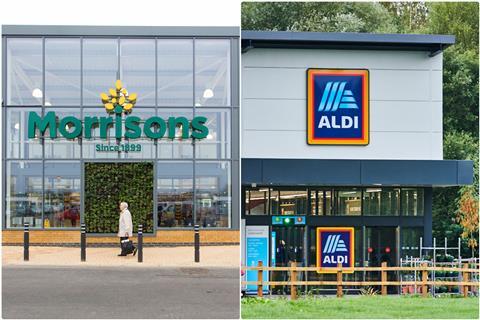
“We’re probably past the peak of the disruptive effect of discounters. Supermarkets have learned how to compete with them.”
Those prophetic words were uttered by Morrisons chairman Sir Terry Leahy in January this year – three months after completion of the £10bn Clayton Dubilier & Rice acquisition. And if they looked brave at the time, how do they look now, with Morrisons officially one of the ‘big four’ no more, its place usurped by “disruptive” discounter Aldi in the latest Kantar 12-week figures?
Aldi share was actually ahead of Morrisons in a four-week period as long ago as March. But with more store openings since then Aldi has been given further impetus – a point Morrisons was keen to make in a rather defensive statement it put out in the aftermath of the announcement.
“Market share is partly a function of new store openings,” it said, “and although Morrisons has not put on any significant new space for a while, some competitors are still opening many new stores. But customers don’t really care about market share statistics – they care about value, quality, provenance and service – and that is where our focus is going to remain.”
It’s true Aldi has benefited from new store openings. And with Morrisons set to claw back some share with the McColls acquisition, this week it also revealed plans to open “thousands” more Morrisons Daily stores. So that will help. And the share figures don’t include fuel, where Morrisons enjoys a further advantage over Aldi.
But the Kantar switching data must be concerning Morrisons. Among the big four, Tesco lost the most sales to Aldi (£63.6m) but next was Morrisons at £42.6m and that’s with a far smaller share.
Besides Aldi is winning share from everyone – even Lidl. So it’s not just about store openings, or simply by dint of being a discounter: it’s also about strong availability and continuity of supply. That’s been an issue besetting both Lidl and Morrisons, linked surely to their poor showing in the latest Grocery Code Adjudicator survey in June.
Morrisons is also on a sticky wicket when it comes to those qualities it promises to be focusing on. On value, it’s increased the number of value lines to 134 [Assosia], but that’s a small fraction of its 20,000+ total range. And while the Grocer 33 is only a spotcheck, over weeks and months it consistently seems to be more expensive than rivals in the Grocer 33 – with its price on key value items like milk and butter even higher than its old big four rivals.
As to comparisons on value with the discounters, it’s no contest: in the last ‘Super 33’ Aldi was 18% cheaper than Morrisons.
The loss of competitiveness can be seen in the gradual reduction in Morrisons promotions (see table). Down 27% from pre-pandemic levels to 5,254, price-only promos account for the lion’s share, with a 38% reduction there vs 11% for multibuys. What’s more, the average saving on price-only promos has fallen by almost two percentage points to 26.3%.
Of course, the reduced promotions and lower savings partly reflect the management of cost price increases amid soaring inflation, but The Grocer understands from suppliers that there isn’t always a link between shelf-edge prices and increases to suppliers.
One reason for the lack of competitiveness, ironically, is its vertically integrated supply chain. Where other supermarkets may take several weeks to plan and negotiate a price increase, Morrisons has to pay up front at whatever the spot price. Of course the reverse is true when you come out of a period of high inflation. The benefits can be seen immediately. And it remains committed also due to the flexibility it affords with wonky veg, pack size adjustments and so forth.
But it’s impossible to ignore the £5.6bn of debt Morrisons has taken on following the CD&R deal as a factor in its lack of competitiveness.
Nor can it be complacent on other comparators.
On quality, how many awards does Morrisons win vs Aldi? Sure, there are differences, not least in terms of range. But it’s certainly not always obvious and it feels significant that Morrisons has put its advertising up for tender. Morrisons should be shouting its differences – from Aldi, and from the rest of the market – from the rooftops. If they’re positive that is.
The vertically integrated supply chain at Morrisons is certainly a differentiator, but provenance is an area on which Aldi is a very effective competitor. It’s continually upping its pledges to British farmers and UK sourcing, with a further £3.5bn committed last December to finding an extra 100 suppliers – a commitment it rams home continually by draping union flags all over its stores.
As to service, it’s true that Morrisons has its Market Street. It makes it possible to order in small quantities, a potential advantage in a cost of living crisis that it could be shouting about. There’s also a fair amount of goodwill in the tank from its 500 ‘community champions’, which were such a key feature of its award-winning response to the pandemic. But as well as availability issues, Morrisons has not performed highly on customer service in the last year as the summary results in The Grocer 33 in June attests.
In the meantime Aldi continues to invest in new stores and store refurbishment.
All in all Aldi is a formidable competitor in all areas that Morrisons singles out. That is why it’s taken its place in the big four.
Or as Ged Futter, CEO of the Retail Mind, puts it: “Customers don’t really care about market share statistics – they care about value, quality, provenance and service – and that is why they are switching to Aldi.”









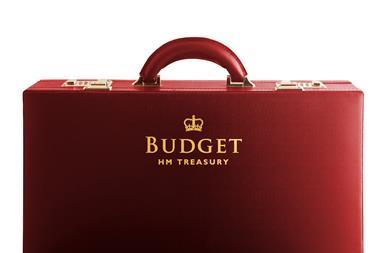


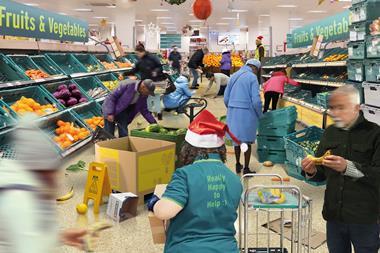
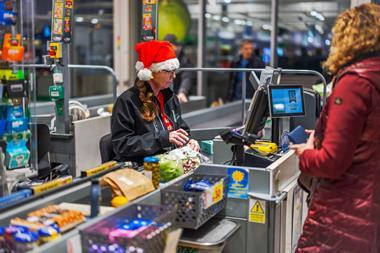


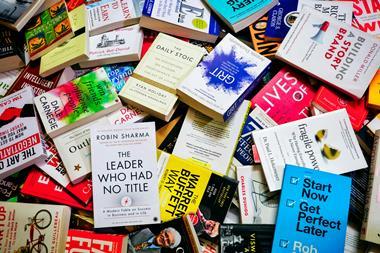

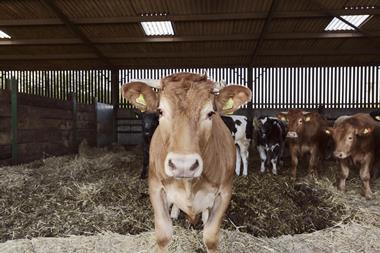
1 Readers' comment